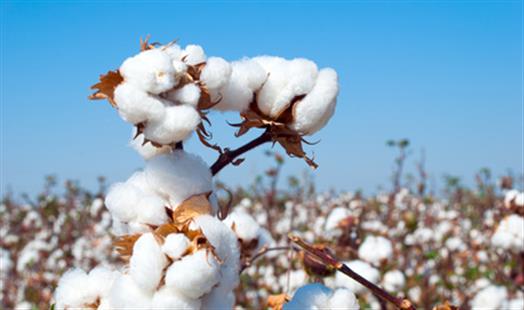Cotton crop halfway harvested, seed prices expected to plummet as compared to 2016
by October 16, 2017 8:28 pm 527 views

About half the state’s cotton acres have been harvested and the rest could be out of the ground by Nov. 1. Arkansas cotton acreage leaped when compared to 2016 as growers planted approximately 440,000 acres of upland cotton, an increase of more than 60,000 acres. But profitability will be hard on some farmers as the prices for milled cotton seeds are expected to drop from $275 per ton to $175 per ton, cotton agronomist Dr. Bill Robertson told Talk Business & Politics.
“It’s going to make it harder on our producers for sure,” he said. “It’s going to bring down the total value of the crop.”
Robertson said he’s trying to formulate an answer as to why the milled seed values have dropped so dramatically. Cotton crop acreage in the state increased by almost 17% this year, and nationwide, cotton acreage increased by about 20% from last year to approximately 12.1 million acres. The availability of more seed could drive those prices down, he said. Arkansas was expected to have 500,000 acres. Periodic rains in late April and May fouled the crop’s optimal planting window, he said.
Gins offer rebates, cash, or other financial incentives for the milled seeds. Each of the state’s 31 mills offer producers different deals, so it’s hard to calculate what the total financial impact will have on the sector in the state, he said. Cotton farmers can potentially make money off the milled seeds, the cotton, and the lint produced in the ginning process.
Yields are expected to land in the 1,100 pounds per acre range, about the same as last year, but it’s a little early to make accurate tabulations, Robertson said. Some farmers in Clay and Craighead counties are producing four bales per acre, or 2,000 pounds. Other farmers have reported less than two bales per acre.
“It’s really all over the board right now,” he said.
Those yield numbers could be contingent on when the cotton was planted. Early planted cotton in April has had worse yields, while cotton planted later in May is performing slightly better. Farmers south of Interstate 40 in the Mississippi Delta Region planted early. Farmers in Northeast Arkansas were forced to plant later due to floods and wet weather.
Disease and insects only caused minimal damage this growing season, he said. Farmers had to use insecticides sporadically, and pig weed, one of the main nuisance weeds in the fields was better contained this season. Many cotton farmers used dicamba resistant seeds when planting, and the herbicide worked well on pig weeds, said Robertson. The state is expected to ban the use of dicamba after April 18, 2018. The Arkansas State Plant Board received about 1,000 damage reports from farmers that planted soybeans and other crops were not dicamba resistant.
Arkansas’ sandy soil in the Mississippi River Delta Region is prime for growing the cotton crop primarily used in the textile industry. Mississippi and Craighead counties, alone, account for about one-fourth of the state’s cotton crop. Other top cotton producing counties include Clay, Poinsett, and Lee counties.
Prices remain relatively stagnant this year. Cotton is selling for about 68-cents per pound. Some farmers were able to lock in contract rates as high as 75-cents per pound, but most didn’t, Robertson said.
Arkansas cotton will be grown in the state, ginned, and it may be used in textile manufacturing. China’s largest cotton textile manufacturer, the Shandong Ruyi Technology Group, will invest $410 million to retrofit a 1.4 million square foot cotton-spinning, garment factory in Forrest City. It will create up to 800 jobs that pay on average $15 per hour. The plant could use up to 200,000 tons of Arkansas cotton per year. Arkansas is the fifth largest cotton producer among all states, producing more than 840,000 bales in 2016.
